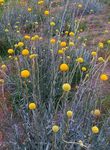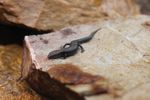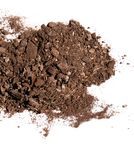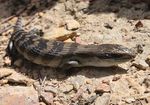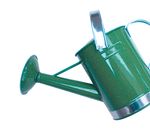Starting a habitat garden
←
→
Page content transcription
If your browser does not render page correctly, please read the page content below
RAINBOW LORIKEET DRUMSTICKS
Starting a habitat garden
We are drawn to gardening because it connects us with nature. A garden,
no matter how big or small, can bring joy and help us to relax and unwind.
But often people find gardening a mighty battle, where weeds and pests
must be eradicated using chemicals, plants and lawns watered, fertilised
, and controlled. Creating a habitat garden – a space planted with hardy,
indigenous plants (native to your local area) will make your life easier
and turn gardening into a pleasure. Not only will you find indigenous
plants simple to grow and manage, your garden will come alive with birds,
lizards, bugs, and butterflies.
Imagine your garden filled with beautiful, resilient plants with an abundance
of textures, fragrances, and colours. A place where Rainbow Lorikeets
clamber among nectar-rich flowers; butterflies dance with wildflowers and
small lizards sun themselves on rocks by your backdoor. A wildlife-friendly
garden is easy to achieve when you work in harmony with nature, and these
simple steps will help you on your way.
Habitat Heroes Starting a habitat garden 1I don’t know where to begin
1. Go for a walk
When designing your garden, let nature be your guide. Take a
stroll through your neighbourhood, study the native plants that
thrive locally in gardens and parks as these plants have adapted
to the soil and climate conditions in your area. Different
plants that grow together using the same soil, air, and water
are known as plant communities. When you grow plants that
belong in your area and that grow naturally together, you will
achieve a thriving, low maintenance garden. If you look closely
at plant communities in the wild, notice that there are layers
of plants – ground covers and smaller plants like grasses and
wildflowers, larger shrubs and bushes and an overstory of trees.
Plants don’t exist in isolation with bare earth around them so
when you provide a continuous layer of vegetation from the
ground level to the treetops, you are creating a garden where
animals can shelter, visit and make their homes.
2.
Start by your door and
start small
A small area can be more manageable
when starting out and placing your new
plants close to the house will ensure
you keep an eye on them as they
establish. Ideally, you want your garden
hose to reach your new plants, but if
it doesn’t, simply place a watering-can
near your door and be prepared to
3.
water the young plants by hand.
Don’t remove all your existing plants
You do not need to remove all existing plants to start your new wildlife friendly
garden. Keeping large plants and shrubs in your garden will protect young seedlings as
they establish and help keep weeds down. You can then remove or transplant unwanted
plants once your new seedlings have grown. A quick and easy way to enhance your
garden is to prune the lower branches of your trees and shrubs and underplant them
with native ground covers and wildflowers. Indigenous plants can be purchased as tube
stock from your local Indigenous nursery. These smaller plants will adapt quicker to
the conditions of your garden and within a season they will grow to the same height or
bigger than larger nursery plants that have been raised a green house.
4. Make your soil happy
Your soil does not have to resemble potting mix. If you have 4- 5% organic matter in your soil, there is no
need for amendments. Plants that are indigenous to your area will thrive in the natural local soil types and
adapt to your garden conditions. Simply add a handful of light compost to the soil when planting and a
sprinkle of slow release native fertiliser or aged animal manure (cow or sheep). This will give the seedlings
the boost they need to adapt to their new environment.
Habitat Heroes Starting a habitat garden 25.
Don’t break your back
Unless your soil is severely compacted
there is no need to dig or till your
soil. Double digging is a back-breaking
method which involves removing layers
of soil from the bed, mixing it with soil
amendments and replacing it back into
the garden. This method can destroy the
natural soil layers and creates perfect
conditions for weeds and invasive
species. 6.
Ditch the pebbles and use plants instead
Pebbles do not aid plant growth or soil health, instead they hold heat and raise the
soil temperature leading to stressed, thirsty plants which will then require regular
removal of dead leaves and plant debris. A medium chunky bark mulch (applied at
50 - 75mm thick) provides ideal growing conditions for native plants. It keeps the
soil cool and moist, prevents weeds and can reduce watering by 60 per cent. Start
your new garden with a layer of mulch but aim to cover the soil with plants such as
groundcovers and wildflowers over the long term. Ground covers will discourage
weeds better than pebbles and mulch, and once established will require far less
work than mulch which breaks down and must be replenished or replaced each year.
Planting groundcovers and low shrubs along the border will stop birds flicking mulch
out of the garden.
7. Use natural pest control
One of the most important and most Keep your lizards happy - avoid raking
vulnerable wildlife species that you can up your leaf litter and mulch and do not
welcome to your garden are lizards. use chemicals, pesticides, non-organic
Urban lizard populations are on the fertilisers, or snail pellets in your garden.
decline due to loss of habitat but if Chemicals can kill lizards and they won’t
you encourage and protect these little come to your garden if there are no bugs
creatures in your garden, they will help or snails to eat.
control pests and bugs for you naturally.
The prospect of designing a garden can
Little skinks and geckos feed on insects,
GARDEN SKINK be daunting but growing wildlife friendly
while larger lizards such as the Blue-
plants is just as easy as filling your
tongue will devour slugs and snails.
garden with introduced flowers, shrubs,
Encourage lizards to your garden trees, and lawns. The difference is that
by planting tussock grasses and indigenous plants require less watering,
groundcovers such as Flax Lilies (Dianella fertilisers and pesticides and will improve
spp), Purple Coral Pea (Hardenbergia the environment, meet the specific
violacea), Wallaby Grass (Rytidosperma needs of local wildlife, and restore the
spp) and Ruby Saltbush (Enchylaena health of your soil. Gardening with plants
tomentosa). Logs, twigs, large pieces that are adapted to your climate will
of bark and old earthenware pipes thrive with a little routine care and give
will provide shelter for lizards whilst a you confidence to grow your skills as a
BLUE-TONGUE LIZARD shallow dish of water along with a flat gardener.
rock or brick for basking will encourage
lizards to stay.
Habitat Heroes Starting a habitat garden 3You can also read



